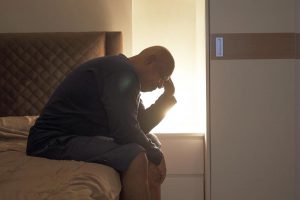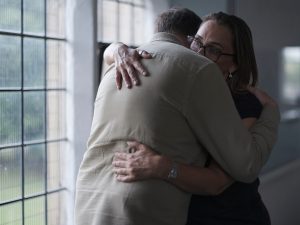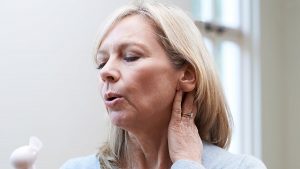Brittle bones are often seen as a woman’s health issue, but low bone mass may be more common among middle-aged men than generally thought, a small study suggests.
The research, of 173 adults aged 35 to 50, found that men and women were equally likely to have low bone mass in the hip. It was found in 28% of men and 26% of women.
Those study participants, the researchers said, had osteopenia, or lower-than-normal bone density. In some cases, it progresses to osteoporosis — the brittle-bone disease that makes people vulnerable to fractures.
The fact that osteopenia was just as common in men came as a surprise, said researcher Allison Ford, a professor of health and exercise science at the University of Mississippi.
Full-blown osteoporosis is clearly more common in women. About one-quarter of U.S. women aged 65 and up have the condition in the hip or lower spine, according to the U.S. Centers for Disease Control and Prevention. That compares with about 5% of men the same age.
But, Ford said, the new findings suggest low bone density might be more common in middle-aged men than appreciated.
“Low bone mineral density and osteoporosis affect men,” she said. “They should not be overlooked.”
Ford suggested men take steps to help ensure their bones stay healthy — including eating a well-balanced diet with enough calcium, getting adequate vitamin D, and performing weight-bearing exercise.
Weight-bearing refers to activities that make the body move against gravity. Jogging, dancing, stair-climbing and walking all qualify, according to the National Osteoporosis Foundation.
The findings were published May 28 in the Journal of the American Osteopathic Association. The research was based on bone density scans of 173 men and women. All were recruited from the University of Mississippi or the surrounding community, and most were white.
That’s a limitation, Ford noted, because it’s not clear whether the prevalence of osteopenia would be the same in a larger, more diverse population.
Ford said the findings “shed light” on low bone density in men, but more research is needed.
According to Dr. Michael Lewiecki, a trustee with the National Osteoporosis Foundation, “There’s a general message from this study that’s useful. Men can have low bone density and develop osteoporosis, too.”
The condition typically manifests later for men. They generally have larger bones than women, and they don’t go through the rapid hormonal changes of menopause, noted Lewiecki, who also directs the New Mexico Clinical Research and Osteoporosis Center, in Albuquerque.
Men do, however, see a gradual waning in testosterone, and low testosterone is one contributor to osteoporosis in men, Lewiecki said. Heavy drinking is another risk factor for bone loss, he noted, particularly when it comes to men’s risk.
The osteoporosis foundation suggests that men aged 70 and older have their bone density screened, Lewiecki said. It’s also recommended for people who break a bone after age 50.
In addition, men should see their doctor if they’ve lost 1.5 inches or more in height, Lewiecki advised. That could be a sign of a vertebral fracture.
Lewiecki agreed that exercise is one of the keys to maintaining bone health — not only weight-bearing exercise, he said, but also muscle-strengthening and activities that challenge balance skills.
As for the “don’ts,” he said, it’s important to avoid smoking and heavy drinking.
More information
The National Osteoporosis Foundation has an overview on osteoporosis.
Source: HealthDay
Copyright © 2025 HealthDay. All rights reserved.

















